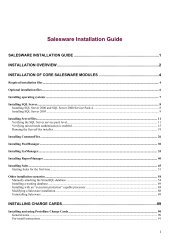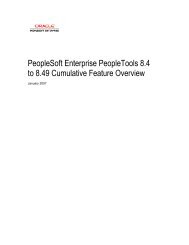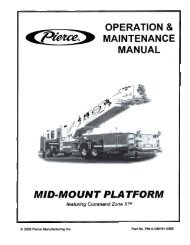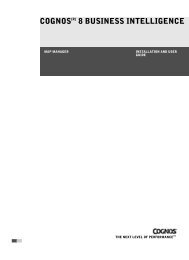Cognos ReportNetTM Installation and Configuration Guide
Cognos ReportNetTM Installation and Configuration Guide
Cognos ReportNetTM Installation and Configuration Guide
You also want an ePaper? Increase the reach of your titles
YUMPU automatically turns print PDFs into web optimized ePapers that Google loves.
Chapter 4: Configuring ReportNet<br />
Map Content Locales<br />
Adding incomplete locales (languages) to the ReportNet environment does not guarantee that<br />
your computer has a font that can display Web pages in your preferred languages. Ensure that<br />
you install the appropriate language packs to support the character sets you use.<br />
Steps<br />
1. On the computer where you installed Content Manager, start <strong>Cognos</strong> <strong>Configuration</strong>.<br />
2. From the Action menu, click Edit Global <strong>Configuration</strong>.<br />
3. Click the Content Locales tab.<br />
4. Click Add.<br />
Tip: To remove support, select the check box next to the supported item <strong>and</strong> then click<br />
Remove.<br />
5. In the second column, type an appropriate value.<br />
• To add language support for report data <strong>and</strong> metadata, type a partial local (language)<br />
setting.<br />
• To add support specific to a region, type a complete locale (language-region) setting.<br />
6. Repeat steps 3 to 5 for each additional locale that you want to support.<br />
7. From the File menu, click Save.<br />
Use the Content Locale Mappings table to map user locales to a complete (language-region) or<br />
partial (language) locale. You can also map a user’s preferred language to another language if<br />
content is not available in the user’s preferred language.<br />
For example, if a report is not available in a preferred language, for example Vietnamese, but is<br />
available in French <strong>and</strong> German, you can use the Content Mappings table to map the preferred<br />
language (Vietnamese) to another language (French or German). This way, you see the report<br />
in the mapped language.<br />
By default, the Content Locale Mappings table includes locales that do not contain the region.<br />
This allows you to use only the language portion of the locale when you specify locale settings<br />
<strong>and</strong> ensures that you always see the correct information. For example, in a multilingual<br />
database, data is usually available in different languages, such as French (fr), Spanish (es) <strong>and</strong><br />
English (en), rather than being available in different locales, such as English Canada (en-ca),<br />
English United States (en-us), or French France (fr-fr).<br />
The follow examples shows the method that ReportNet uses to determine which report the user<br />
sees if the multiple language versions are available.<br />
Example 1<br />
A report is available in Content Manager in two locales, such as en-us (English-United States)<br />
<strong>and</strong> fr-fr (French-France), but the user locale is set to fr-ca (French-Canadian). ReportNet uses<br />
the locale mapping to determine which report the user sees.<br />
First, ReportNet checks to see if the report is available in Content Manager in the user’s locale.<br />
If it is not available in the user’s locale, ReportNet maps the user’s locale to a normalized locale<br />
configured on the Content Locale Mapping tab. Because the user’s locale is fr-ca, it is mapped<br />
to fr. ReportNet uses the mapped value to see if the report is available in fr. In this case, the<br />
report is available in en-us <strong>and</strong> fr-fr, not fr.<br />
Next, ReportNet maps each of the available reports to a normalized locale. Therefore, en-us<br />
becomes en <strong>and</strong> fr-fr becomes fr.<br />
Because both report <strong>and</strong> the user locale maps to fr, the user having the user locale fr-ca will see<br />
the report saved with the locale fr-fr.<br />
Example 2<br />
The user’s locale <strong>and</strong> the report locales all map to the same language. ReportNet chooses<br />
which locale to use. For example, if a user’s locale is en-ca (English-Canada) <strong>and</strong> the reports<br />
are available in en-us (English-United States) <strong>and</strong> en-gb (English-United Kingdom), ReportNet<br />
maps each locale to en. The user will see the report in the locale setting that ReportNet<br />
chooses.<br />
56 <strong>Cognos</strong> ReportNet TM
















